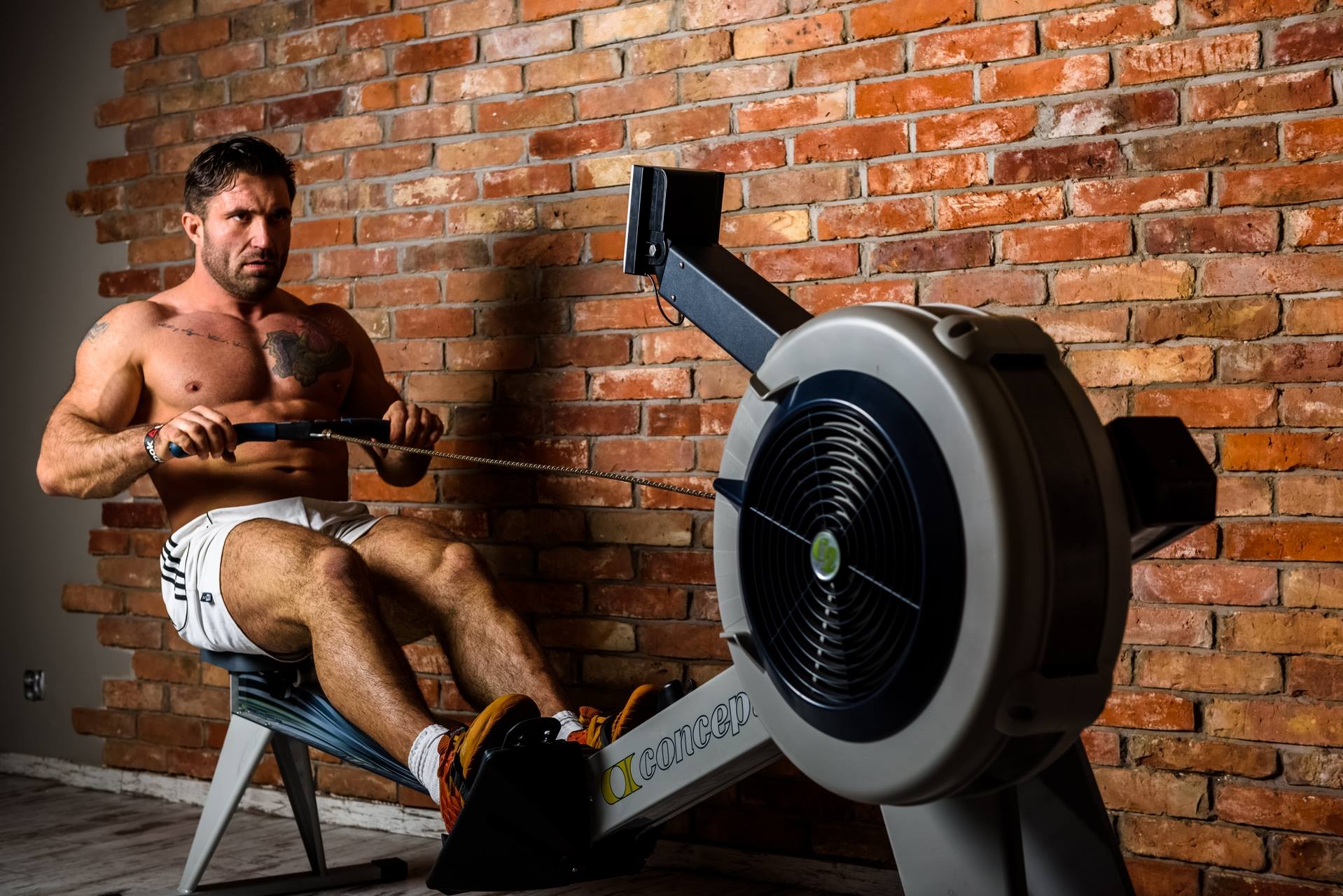
Which Cardio is Best: Rowing Versus Swimming
Our recent video “What Cardio is Best: Running, Rowing, or Walking” inspired me to compare another cardio workout, swimming. I have a background in both indoor rowing and swimming, but recently have been more focused on rowing. I may be a little biased, I’ll admit, but I’ll do my best to give an honest review on both.
 In previous articles and videos provided by Dark Horse Rowing, we’ve covered at length how rowing is a great full body workout because you use 86% of the muscles in your body. And in my mind, that’s pretty hard to beat. I did a lot of research on swimming and tried to find an exact percentage on how much of the body is used. The consistent theme across the board is that swimming is a “full body workout” including upper body, core, and lower body. If we were to evaluate on this alone, then swimming would be the winner. But let’s “dive” deeper (pun intended).
In previous articles and videos provided by Dark Horse Rowing, we’ve covered at length how rowing is a great full body workout because you use 86% of the muscles in your body. And in my mind, that’s pretty hard to beat. I did a lot of research on swimming and tried to find an exact percentage on how much of the body is used. The consistent theme across the board is that swimming is a “full body workout” including upper body, core, and lower body. If we were to evaluate on this alone, then swimming would be the winner. But let’s “dive” deeper (pun intended).
The Benefits of Rowing
- Rowing works 9 major muscle groups including hamstrings, glutes, quads, core, lats, back, shoulders, triceps and biceps.
- Rowing is very low impact so athletes, or the average person, recovering from injury can use this during their recovery. We’ve seen athletes using this machine while wearing a cast on their foot with the help of a skateboard. Seeing as how casts can’t get wet, I’d say that is one huge advantage for rowing vs. swimming.
- Another positive for indoor rowing is that it can be done almost anywhere. The Concept2 machine is extremely easy to take apart and move around if needed. Making training easy because yo
 u can take it on the road with you. Pools aren’t always accessible and you certainly cannot bring them the road with you. So one more point for rowing.
u can take it on the road with you. Pools aren’t always accessible and you certainly cannot bring them the road with you. So one more point for rowing. - Rowing is by no means easy, but in my opinion a lot easier to learn then swimming. If you didn’t grow up swimming then learning later in life could be very difficult and in a time where people tend to find it hard to get a hour workout in, most would probably find it difficult to learn to swim. Advantage rowing.
The Benefits of Swimming
- Swimming has been known as the “full body workout”. Most would hear that and think this is an “easy win” for swimming. But in my opinion getting that full body workout isn’t very easy. Swimming is an extremely difficult sport and you’re working extremely hard to get that workout in.
- Yes, swimming is a low-impact exercise like rowing. In fact you’re only bearing about 10% of your weight when swimming due to our bodies buoyancy in water. This means easier movement and le
 ss strain on our muscles joints and bones. Lowering risk of injury than other forms of exercise. This is definitely a huge point for swimming.
ss strain on our muscles joints and bones. Lowering risk of injury than other forms of exercise. This is definitely a huge point for swimming. - In my opinion another positive for swimming is the art of breathing. Yes, I know It isn’t easy to breathe while in the middle of a 8×500 interval rowing workout, but at the end of the day you’re not under water. Advantage swimming.
- Yet one more positive for swimming is you’re never sweating; the water is constantly cooling you down. Whereas in rowing, it doesn’t matter how high that AC is pumping you are still going to make your own swimming pool next to your erg.
- Now lets go back to swimming being the “full body workout” . This might be true but at what cost? In order to get the body working you need to learn several strokes like the breast, back, butterfly, and the most popular, freestyle. While in indoor rowing we are just using one stroke, one movement. Even though at times we may see people doing things that look totally different, there is only one stroke on the rower. Advantage, rowing.
So to sum up this very close battle between rowing and swimming, I would have to give the advantage to rowing. With that being said, we would love to hear your comments and feedback!


 u can take it on the road with you. Pools aren’t always accessible and you certainly cannot bring them the road with you. So one more point for rowing.
u can take it on the road with you. Pools aren’t always accessible and you certainly cannot bring them the road with you. So one more point for rowing. ss strain on our muscles joints and bones. Lowering risk of injury than other forms of exercise. This is definitely a huge point for swimming.
ss strain on our muscles joints and bones. Lowering risk of injury than other forms of exercise. This is definitely a huge point for swimming.
2 Comments
Thanks man <3
Every stroke, you’re using nine muscle groups, so whether you’re trying to burn calories or increase your fitness level, it’s really good because it takes away the impact of going out running. It’s also a really good way to tone up with no impact on the joints.